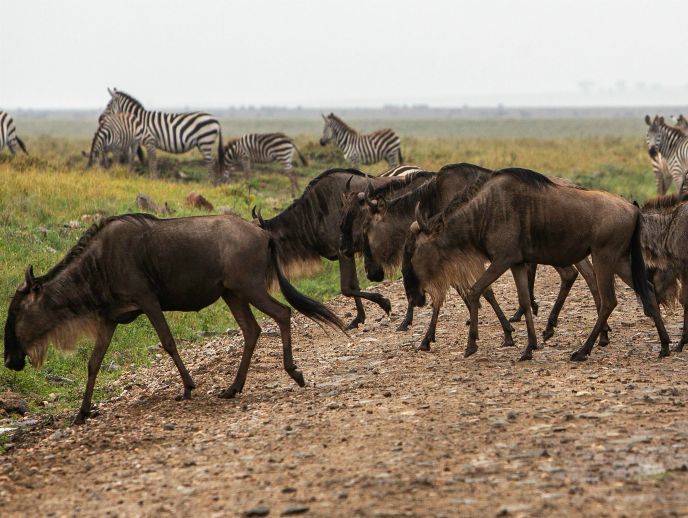Burning issues on land use management in the Serengeti-Mara
The Serengeti-Mara is one of the few wildlife hotspot sites monitored since the late 1950s. Until recently, there has been little emphasis on researching social and policy changes that may affect the area. The EU-funded project AfricanBioServices has changed the emphasis. One of its key activities was “to bring together ecological, climatic and socio-economic data in a common database framework for internal use, for the public and researchers of the future,” emphasises Prof. Eivin Røskaft, project coordinator. The parks are feeling the squeeze Human population growth is one of the highest – in the Serengeti-Mara region it’s 4.3 % while the national average is only 2.9 %. “Accompanied by new roads, fences and urban centres, the increase also means more livestock which increases grazing pressure,” points out Prof. Røskaft. Wildlife is being driven deeper into the park as livestock make a night-time appearance grazing freely, an illegal activity. As a result, a dominant species, the wildebeest, is showing a 9 % decline in occupancy, or 36 fewer days annually. This has important consequences for ecosystem services like bushmeat as well as tourism potential. To burn or not to burn, that is the question To control ticks and diseases and regenerate grass for grazers, natural resource managers often use controlled burning. As Prof. Røskaft points out: “Savannah fires have a negative effect on black rhinos whose grazing preference is land set alight only once every 10 years. The study shows the rhinos actively avoid areas that are burned frequently, as this reduces the availability of the plants they prefer to eat.” By contrast, Dr John Bukome of the Tanzania Wildlife Research Institute found that areas with regular burning had fewer alien plant species, another threat to ecosystem sustainability. The researchers calculated that a visitor to the park has an 80 % chance of seeing an alien plant. IT and its role in Serengeti-Mara sustainability AfricanBioServices is building two apps – a Serengeti animal tracker to trace wildebeest migration, and ServiceScape. Helping park managers to explore alternative future scenarios, ServiceScape visualises the resultant consequences of different management strategies on wild-life-related ecosystem services. “Now we have generated outstanding results, the next step is to establish an open source database that will help find solutions to practical socio-ecological problems,” Prof. Røskaft points out. “Trust and technical resources are essential to this Big Data project and this is our biggest challenge at present,” he continues. Working with policymakers and communities Dependence on ecosystem services – for example bushmeat – is strongest in developing regions where poverty restricts access to resources. AfricanBioServices encourages residents to adopt sustainable income activities such as ecotourism and go for alternative sources like chicken and fish. School children pretend to be informers during interviews in imaginative play to understand illegal encroachment on natural resources. Another ‘fun’ approach is by board game where different future scenarios depend on initial choices and actions. “Furthermore, we have created trajectory population forecasts to 2100 for common wildlife species with three climate change scenarios helping wildlife managers develop strategies,” explains Prof. Røskaft. The forecasts should aid in informed decision making To sum up what AfricanBioServices means to the Serengeti-Mara ecosystem, Prof. Røskaft concludes: “AfricanBioServices has built upon and produced great science but it has also generated strong collaborations that span nations, institutions, generations, nationalities, languages, classes, and disciplines.”
Keywords
AfricanBioServices, Serengeti-Mara, wildlife, ecosystem services, grazing







